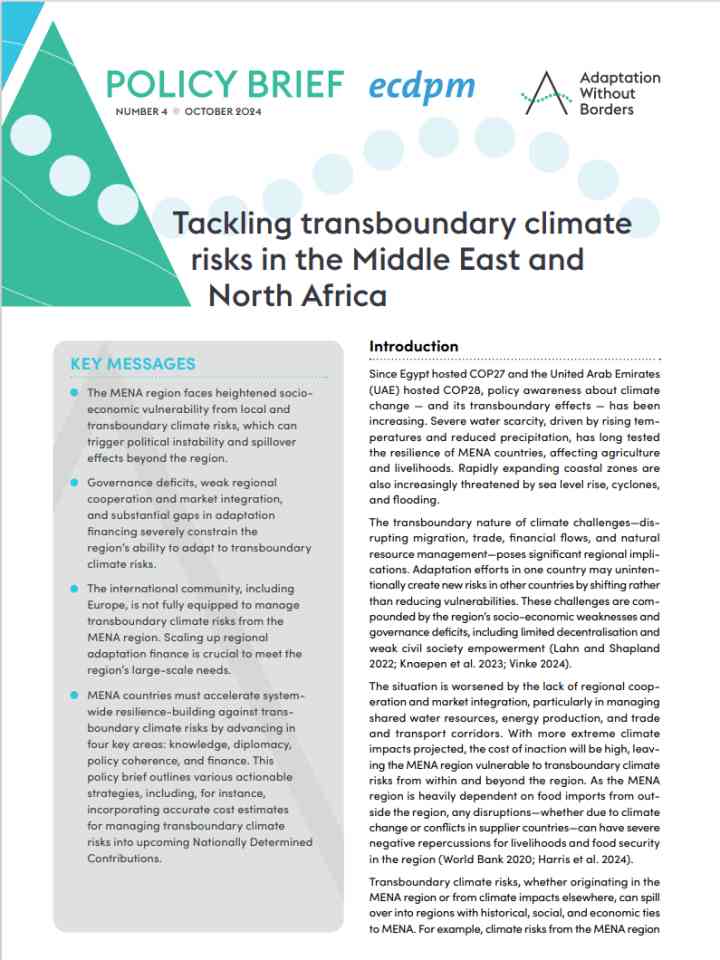Tackling transboundary climate risks in the Middle East and North Africa
This study highlights several key issues concerning the MENA region's socio-economic vulnerability to both local and transboundary climate risks, which have the potential to trigger political instability and generate spillover effects beyond the region. The region's capacity to adapt to these risks is severely constrained by governance deficits, weak regional cooperation, poor market integration, and significant gaps in adaptation financing. Furthermore, the international community, including Europe, lacks adequate mechanisms to address these transboundary climate risks effectively, making it imperative to scale up regional adaptation finance to meet the large-scale needs of the region. To enhance resilience against these risks, MENA countries need to prioritize improvements in four key areas: knowledge, diplomacy, policy coherence, and finance. The policy brief suggests actionable strategies, such as integrating precise cost estimates for managing transboundary climate risks into upcoming Nationally Determined Contributions.
A need for action on four critical fronts (Knaepen et al. 2023) is mentioned:
- Knowledge, tools and innovation, to understand and manage the complexity and uncertainty of transboundary climate risks based on transformative adaptation approaches;
- Policy coherence, to overcome the incoherence between various policy domains such as climate, development, security and trade;
- Diplomacy and cooperation between the MENA region and its international partners to manage shared risks across scales;
- Finance, including innovative instruments from international partners and domestic resources to support adaptation to transboundary climate risks and strengthen systemic resilience in the MENA region.
Explore further
